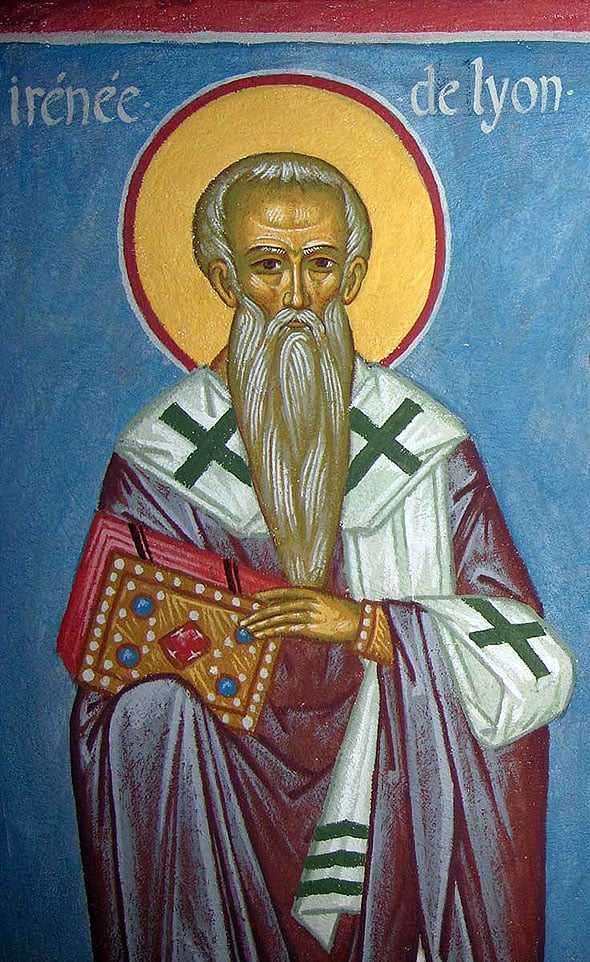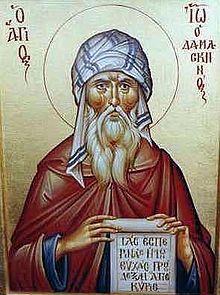3 For I delivered to you as of first
importance what I also received: that Christ died for our sins in accordance
with the Scriptures, 4 that he was buried, that he was raised on
the third day in accordance with the Scriptures, 5 and that he
appeared to Cephas, then to the twelve. 6 Then he appeared to more than five hundred
brothers at one time, most of whom are still alive, though some have fallen
asleep. 7 Then
he appeared to James, then to all the apostles. 8 Last of all, as
to one untimely born, he appeared also to me [Paul] …12 Now if Christ is proclaimed as raised from the dead, how
can some of you say that there is no resurrection of the dead? 13 But if
there is no resurrection of the dead, then not even Christ has been raised. 14 And if
Christ has not been raised, then our preaching is in vain and your faith is in
vain. 15 We are even found to be misrepresenting God, because we
testified about God that he raised Christ, whom he did not raise if it is true
that the dead are not raised. 16 For if the dead are not raised, not even Christ has been
raised. 17 And if Christ has not been raised, your faith is futile
and you are still in your sins. 18 Then those also who have fallen asleep in Christ have
perished. 19 If in Christ we have hope in this life only, we are of
all people most to be pitied. 20 But in fact Christ has been raised from the dead, the
firstfruits of those who have fallen asleep. -1 Corinthians 15:3-8,12-20 ESV
Today, we join millions of Christians across this nation, if
not across the whole world, celebrating the resurrection of our Lord and Savior
Jesus Christ. Today, millions of Christian gather together at sunrise to
worship the risen Jesus, meeting at parks, at beaches, at mountains, and even
at cemeteries. Yes, you heard me right, cemeteries. Doesn’t sound right for Easter,
does it? Cemeteries are something we associate more with Halloween than with
Easter.
Christians meeting in cemeteries for church shouldn’t sound
like a foreign idea. It’s a rich part of church history. While recent studies
may show that Christians didn’t meet in the catacombs in Rome as we thought, early
Christians did indeed meet in cemeteries. At first, it was just for practical
reasons. During times of persecution, Christians met in cemeteries because
cemeteries lied outside the city limits and would not catch the attention of
the authorities. Also, with the growing faith, Christians needed a bigger place
to come together and worship. What bigger a space than cemetery. But as time
went by, meeting in a cemetery to have a deeper meaning.
52 The tombs also were opened. And many bodies
of the saints who had fallen asleep were raised, 53 and coming out of the tombs after his
resurrection they went into the holy city and appeared to many. -Matthew
27:52,53 ESV
These two verses are commonly forgot in the crucifixion and
resurrection story, probably because only Matthew mentions this part of the
story, and he really doesn’t put a lot of attention or detail. Who are these
“saints” or, as the Greek literally puts it, “holy ones”? Are they Old
Testament heroes of the faith? Maybe they aren’t. After all, if Moses or Elijah
was to resurrect, walk into the city and say, “Hey, I’m Moses” or “Hey, I’m
Elijah,” how could they really prove it? Even today with all our forensic
science, we too would have a hard time proving the identity of someone before
the time Christ, whether dead or alive. Then perhaps maybe these saints or
“holy ones” are people living in the first century A.D. who believed in Jesus
as the Messiah and died during Christ’s ministry, like Simeon or Anna from the
Christmas story. But then again, the Jews living in Israel today will tell you
they know the final resting place of all those Old Testament heroes. They’ve
clearly marked, or should I say “decorated,” the tomb of Samuel (trust me, I’ve
been there). So maybe it could be those Old Testament heroes. Either way, the
truth remains. Upon Christ’s death, the tombs broke open. Upon Christ’s
resurrection, the residents of the tombs came alive. The life-giving spirit has
given life to those who were dead!
All the early Christians knew what this meant. No longer was
death to be feared as the eternal separator and end to all. Their Lord, Savior
and God had overcome death once. Now the Christians had hope. They knew by
believing in Jesus, they too could look forward to overcoming death and coming
back to life, just like the saints and holy ones who had also died and come
back to life when Jesus died and came back to life. The early Christians lived
out this truth daily in their lives. The laid hands and prayed healing on those
who had communicable and fatal diseases. They preached the word of God where
the word of God was banned, and they were martyred as a result. Most pertinent
to my introduction, Christians worshiped in cemeteries, believing that they
were worshipping side-by-side with their brothers and sisters in Christ who
were not dead but merely just sleeping until Christ’s return. In fact, cemetery in Greek is koimeteria, which literally means “sleeping place.”
Part of my Easter
tradition consists of calling my grandfather to wish him a happy Easter. My
grandfather, turning 86 years old this June, is well aware of how close to
death. I’m not ashamed or embarrassed to say such, for every holiday he reminds
of how close to death he is. Despite being as healthy as an 86 year old can be,
he’ll still say something like, “I’m not sure if I’ll be alive when you
graduate from seminary or when you sister gets married” or he’ll tell me, “I’m
just taking it one day at a time, for I might die tomorrow.” One time he even
told me he was just waiting to die! As you can imagine, these calls become quite
depressing. Yet when it comes to time to end the call, my grandfather never
lets me say “goodbye.” He always says, “No, Graham, do not say ‘goodbye,’ for
this is not goodbye. Say ‘so long for now,’ for this is until we talk again.”
When Jesus rose from the dead, he removed all the “goodbyes.” He gave us hope
that this is not the end, but the best is yet to come. So next time you walk by
or drive by a cemetery, remember the resurrection of Jesus Christ, and then
remember, this is not “goodbye,” this is just so long for now.












